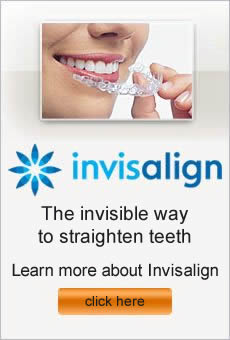Most problems that happen with your braces or other orthodontic appliances can be treated as soon as you can schedule an appointment with your orthodontist. You should contact their office if you have severe pain or a painful problem with your appliance that you can’t remedy yourself. In the meantime, there are some solutions you can try that offer temporary relief until you can get into the office. Here are some common problems that occur with appliances, and solutions that may help.
Loose bracket or band
Leave the bracket or band in place if it’s loose but still attached. Place some wax on it to hold it steady. If the bracket or band falls off completely, wrap it in a tissue to take with you when you see your orthodontist.
Loose wire
Try using tweezers to put the wire back in place, and cover it with wax. If neither of these help, use a fingernail clipper to trim the wire after the last tooth to which it’s attached. Place wax over that until you see your orthodontist.
Loose appliance
Place wax over any part of the appliance that is loose and poking you.
Poking wire
Use a pencil eraser to push down the wire that is poking you, or place wax on it so it’s not uncomfortable.
Headgear discomfort
If you haven’t been wearing your headgear as instructed, that may be causing your discomfort. The more you wear it, the more comfortable it becomes. If any portion of it is bent, such as the facebow, call your orthodontist.
Soreness
It is normal for your mouth to feel sore for the first three to five days after getting braces. Rinsing your mouth with warm salt water may help, as does taking ibuprofen or other over-the-counter pain reliever.
Burbank Orthodontist
If you think you’ll be the only parent wearing braces on your teeth at the same time as your teenagers, think again. One out of every five patients wearing braces is an adult. Advances in orthodontic treatment have allowed wearing braces as an adult to become an appealing and realistic option. It’s not too late to change your smile so that you look and feel your best.
Do braces work for adults?
Braces can be successful on patients of all ages. The process of moving your teeth into more healthy and attractive positions is the same whether you’re 15 or 50. There’s still time to correct problems that may have been bothering you for many years, including crooked or crowded teeth, an overbite or underbite, or jaw issues.
Where do I start?
The first step is to schedule an appointment with a reputable orthodontist in your area. Ask friends, family, and neighbors for recommendations. During your initial appointment, the orthodontist will usually assess your oral health, discuss treatment options, and answer your questions. Cost and insurance issues will be addressed, and initial photos, x-rays, and impressions might be taken if you choose to pursue treatment.
What are the benefits of adult braces?
Enhancing your smile through orthodontic work can improve you appearance, self-esteem, and your oral health. There are many options available today so that you can choose the one that fits your lifestyle the best. Braces are more comfortable, effective, and inconspicuous than ever before. If straightening your teeth has been your dream for a long time, consider making it a reality because age doesn’t matter.
Invisalign can improve your smile!
With summer months winding down and Fall around the corner, that means many sports are in full swing. That also means more opportunities for people wearing braces to damage their orthodontics, teeth, and mouths. Wearing braces should not stop you from participating in the activities you enjoy, but there are some precautions you should take to protect the investment in your smile.
Depending on the sport you play, it’s most likely smart to wear a mouth guard so your braces don’t cut your mouth. It also helps protect your teeth, jaw, and braces from damage. Mouth guards may not be necessary for light contact sports, but heavy contact sports definitely warrant them. Examples of these include football, basketball, soccer, and hockey. Individual sports are dangerous to your mouth too, like gymnastics and skateboarding.
Mouth guards are made of durable plastic and fit comfortably over your braces. They protect your teeth and soft tissues inside your mouth, and greatly reduce the severity of a dental injury. A properly fitted mouth guard provides a barrier between your braces and your cheek and lips, as well as a barrier between the external source and your teeth. If you’re uncertain what type of mouth guard is best for you, consult your dental care provider for advice.
If you do suffer a dental or facial injury while playing sports, examine your mouth and appliances right away. See your dentist or orthodontist as soon as possible if your teeth are loose or the appliances are damaged. Also, make sure you’re aware of the office policies on emergency services just in case you need help outside of normal business hours.
Don’t think you’re off the hook for dental injuries if you wear braces as an adult. Many trauma injuries occur in weekend athletes. Whatever your age or sport, remember to protect your smile by wearing the correct protective equipment for your mouth.
It may be a surprise to some parents to see 7-year-olds with braces on their teeth already, but it’s becoming more common in today’s orthodontic world. Traditionally, treatment with braces began after most baby teeth were lost, and the majority of adult teeth have developed. Newer theories have led to putting braces on baby teeth so that orthodontists can manage jaw development and positioning of adult teeth. This has created a two-phase approach to orthodontics, with baby teeth braced in the first phase, followed by a rest period, and then a second phase of adult bracing.
Types of braces
Baby teeth usually don’t need full braces in the entire mouth. It depends on your child’s specific orthodontic issues as to what kind of bracing is required. Sometimes a retainer is needed to manage a cross bite, or bracing of only the front baby teeth to correct an overbite or minimize the protrusion of front teeth. Back molars and front teeth are the most commonly braced baby teeth.
Function
Once baby teeth have been positioned to create room for permanent teeth, the second phase of braces is usually shorter than the first. Sometimes a second phase isn’t even needed if the first set of braces allowed the adult teeth to align correctly. A healthy bite has been created that doesn’t need further treatment.
Time frame
You should have your child evaluated by an orthodontist by age seven, so that the need for early intervention can be determined. This lessens the requirement for more aggressive treatment later, like pulling teeth if there isn’t enough room in the jaw.
Special circumstances
Early orthodontic intervention is especially critical if your child was a thumb sucker or used a pacifier for a long time. Habits like these may have altered your child’s jaw or created a crossbite. Without bracing the baby teeth, your child’s jaw may not develop correctly and lead to a permanent misplacement of the jaw and a poor profile.
The foods you eat and when you eat them affects your overall health, but also the health of your teeth and gums. If you eat too many foods loaded with sugar, and not enough foods containing important nutrients, your risk of tooth decay increases. How can choosing a smart diet prevent dental problems?
When plaque on your teeth meets sugar, which then causes acid to attack your teeth, your teeth begin to decay. Foods and drinks containing any type of sugar can lead to tooth decay. You should make a habit of reading the nutrition labels on foods, so that you can opt for the choices lowest in sugar. Common sugar-filled items to avoid include sodas, candy, cookies, and pastries.
On the other hand, certain nutrients help build up the health of your teeth and gums. If your diet lacks those vitamins and minerals, the tissues in your mouth will be less resistant to infection. This can lead to gum disease, which if untreated can end up in tooth loss. Experts suggest that gum disease worsens faster in people who maintain a poor diet.
The key is to eat a balanced diet containing the five major food groups: fruits, vegetables, whole grains, lean protein, and low-fat dairy foods. It’s also important to drink plenty of water. You should also limit snacking between meals, because those tend to be foods that fall outside the recommended food items for healthy teeth. Also, more saliva is produced during a meal, which is helpful in cleaning your mouth and reducing the harmful effects of acid on your teeth and gums.
For good dental health, remember to practice proper dental hygiene such as brushing and flossing regularly. Maintaining consistent dental checkups is another way to maintain your oral health. In the meantime, making smart choices in your diet will help keep your mouth in tip-top shape.



